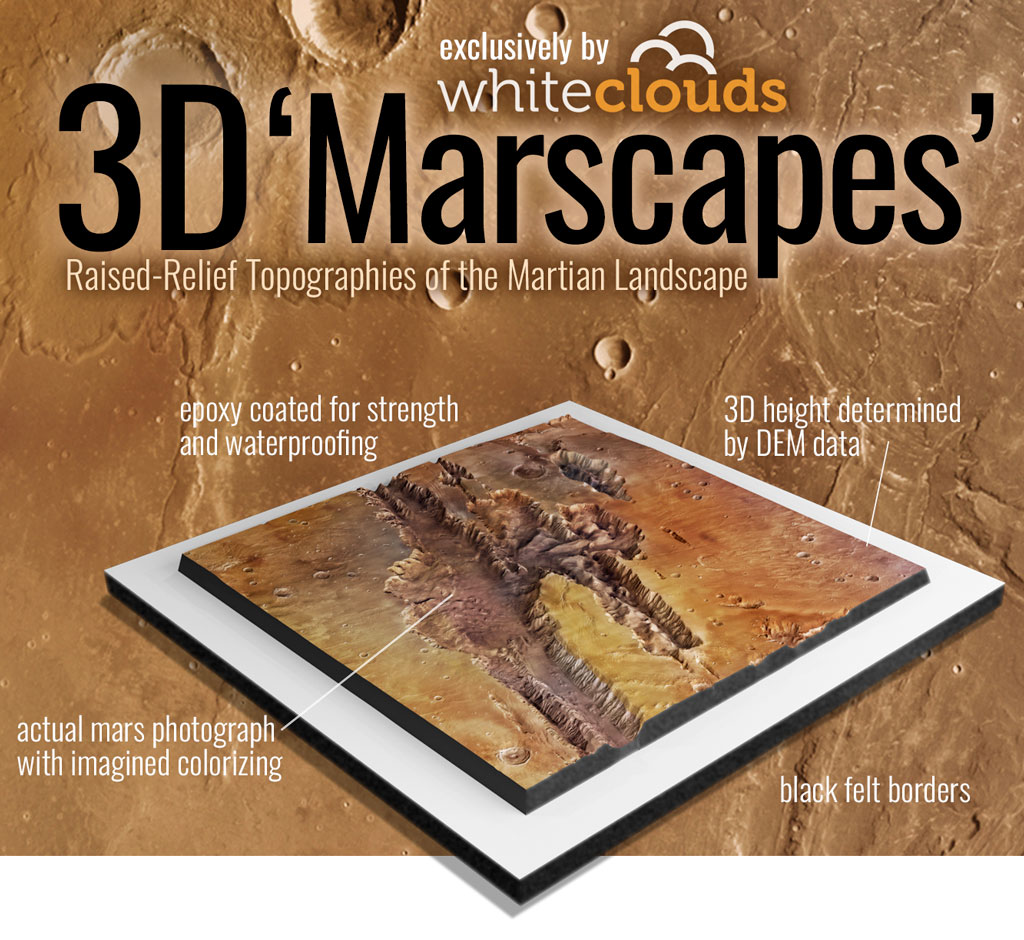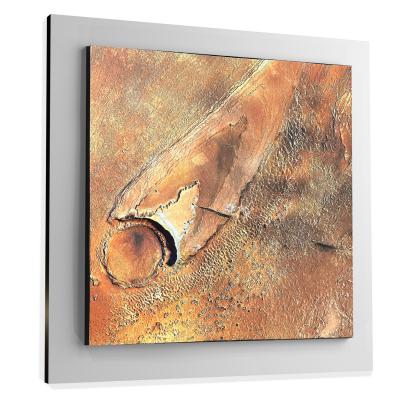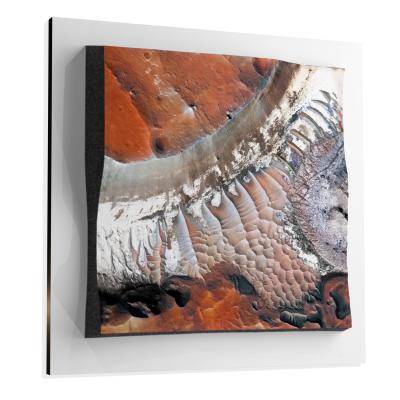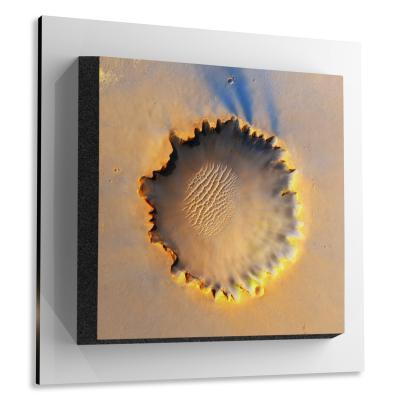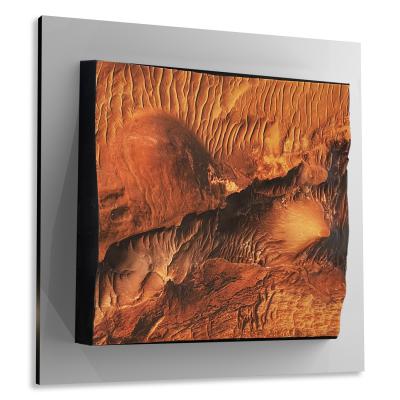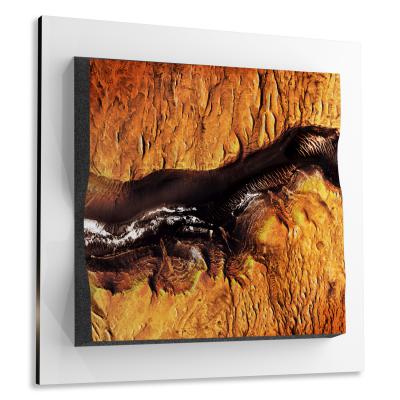Oxia Planum
Oxia Planum
We Build Custom 8K Mars Canvas Prints of Oxia Planum
Did you know we make
custom
8K Mars Canvas Prints

and
3D Marscapes

Oxia Planum
Oxia Planum, a Martian plain of considerable scientific interest, is a subject that has captured the fascination of astrobiologists, planetary geologists, and space enthusiasts alike. This report aims to provide an in-depth analysis of this extraordinary region, delving into its geographical location, geological composition, significant discoveries, scientific missions, and geomorphological features. By the end of this comprehensive study, we will better appreciate Oxia Planum’s importance in understanding Mars’ geological and potentially biological history.
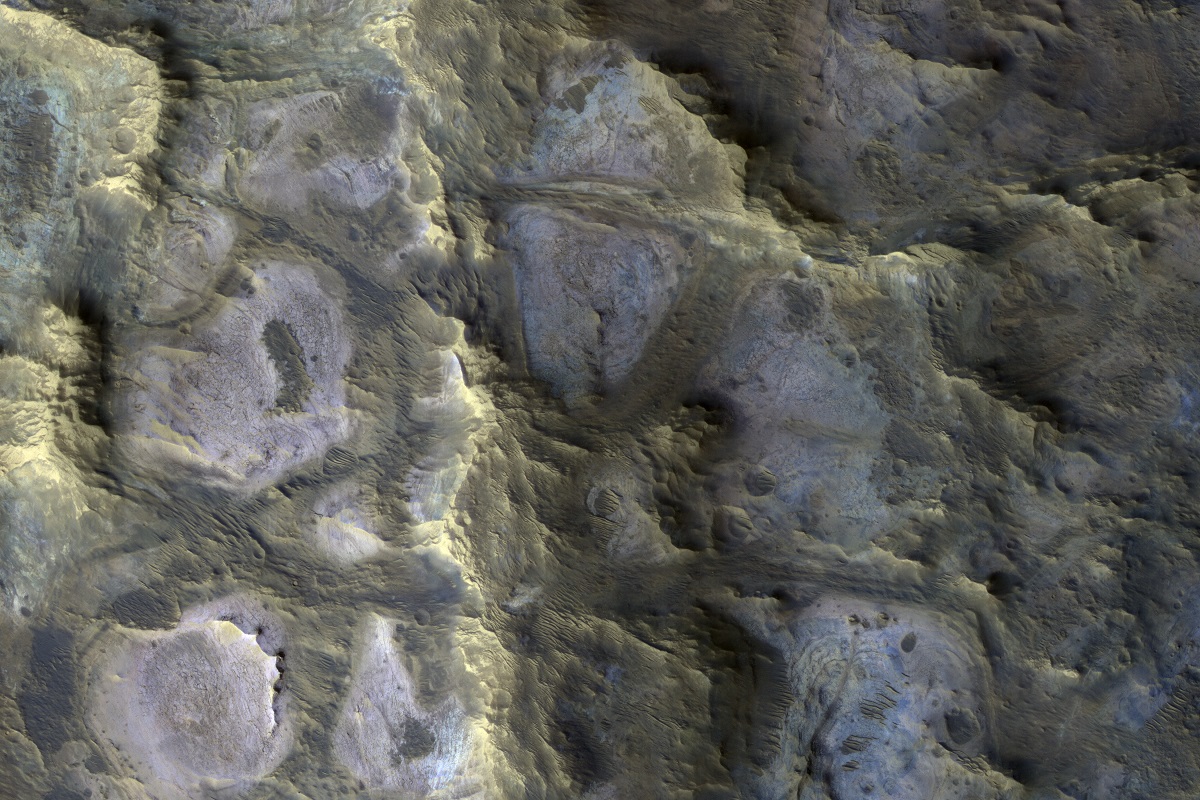 A Technicolor Mound near Oxia Planum
A Technicolor Mound near Oxia Planum
Geographical Location
Oxia Planum is strategically situated within Mars’ northern hemisphere, specifically in the diverse and ancient Arabia Terra region. Its coordinates are precisely at about 18.275°N latitude and 335.368°E longitude. The expansive flat terrain that makes up Oxia Planum extends across an impressive area of approximately 200 km in length and 100 km in width. The region sits at a notably low elevation, about 3,000 meters below Mars’ mean elevation level. This particular geographical trait has rendered Oxia Planum a point of high interest for scientists and researchers studying the history of Mars’ climate and water systems. Its depression-like topography suggests that it might have once acted as a basin for water flows, possibly lakes or even shallow seas. Additionally, Oxia Planum’s proximity to other significant geological features on Mars, such as the mineral-rich Mawrth Vallis and the broad expanse of Arabia Terra, places it at a strategic crossroads for interdisciplinary research. It thus serves as a focal point for holistic studies aimed at understanding the geological, hydrological, and climatic interactions among various Martian landscapes.
Advertisement
Sample Marscapes
Geological Composition
Oxia Planum stands as a complex tapestry of geological wonders, with an array of sedimentary formations that tell a tale of a deeply intricate environmental past. The region is predominantly rich in clay minerals like phyllosilicates, which serve as robust indicators of past water presence on the Martian surface. These clay minerals are part of a complicated layering of rock formations that not only include other water-altered substances like sulfates and oxides but also feature outcroppings of what are believed to be among Mars’ most ancient crustal materials. These ancient outcrops serve as a window into Mars’ early geological epochs, offering clues to the planet’s formative processes. In essence, the juxtaposition of these varied elements—clays, sulfates, oxides, and ancient crust—creates a complex geological record that could be a key to unlocking the secrets of Mars’ geological evolution and potentially its biological past.
Significant Discoveries
Evidence of Ancient Water Bodies
One of the most compelling pieces of evidence suggesting a rich hydrological past for Oxia Planum is the abundant presence of phyllosilicate minerals. These types of clay minerals are known to form in wet environments, making them definitive indicators of ancient Martian lakes, rivers, or perhaps even seas. This gives researchers significant clues to decipher the hydrological cycles that Mars may have undergone in its early history.
Potential Habitability
Oxia Planum’s complex mineralogical composition, including a rich diversity of clays, sulfates, and possibly organics, creates an enticing argument for the region’s potential habitability in the distant past. These conditions might have offered the essential chemical ingredients for microbial life forms, making Oxia Planum a high-priority area for astrobiological investigations.
Scientific Missions
Oxia Planum has been the subject of intense scientific observation and study through a series of sophisticated remote-sensing missions. The High-Resolution Stereo Camera (HRSC) aboard the European Space Agency’s Mars Express Orbiter has yielded highly detailed imagery and three-dimensional elevation models, providing an unprecedented depth of understanding of the region’s topography. The Mars Reconnaissance Orbiter has significantly supplemented this data set through its CRISM (Compact Reconnaissance Imaging Spectrometer for Mars) instrument, pinpointing mineral compositions with astonishing accuracy. Furthermore, the ExoMars Rover mission, a collaboration between the European Space Agency (ESA) and Roscosmos, had targeted Oxia Planum as a potential landing site, primarily due to its compelling scientific promise, though the mission status could have evolved after my last update in September 2021.
Geomorphological Features
Oxia Planum features a diverse geomorphological landscape that seems like a palimpsest of Mars’ geological history. Its surface terrain is largely made up of broad, flat plains that are punctuated by an array of low hills, undulating ridges, and remnants of what appear to be sedimentary layer formations. Aeolian (wind-based) processes have sculpted the landscape, leaving behind an array of dune formations and intricate gully patterns. Fluvial channels crisscross the plains, a testament to the erosional force exerted by ancient water flows. Added to this complex surface are numerous impact craters of varying sizes and stages of weathering, each one contributing another chapter to Oxia Planum’s long and varied geological history. These features collectively offer rich clues about sediment deposition mechanisms, erosional processes, and other transformative actions that have shaped this enigmatic Martian region.
Oxia Planum is not just another plain on the Martian surface; it is a living museum of geological and possibly biological history. Its complex geological composition, rich mineralogy, and intriguing geomorphological features make it a prime candidate for future scientific missions aiming to decode Mars’ past. As we collect more data and expand our understanding of this fascinating region, Oxia Planum promises to remain at the forefront of Martian scientific exploration for years to come.
Check out our 3D Mars Learning Center for more information on Mars and Oxia Planum. You can also learn more at: NASA Mars Exploration.
More About Mars
Contact us today to learn more about our 3D services and how we can help you achieve your goals.
